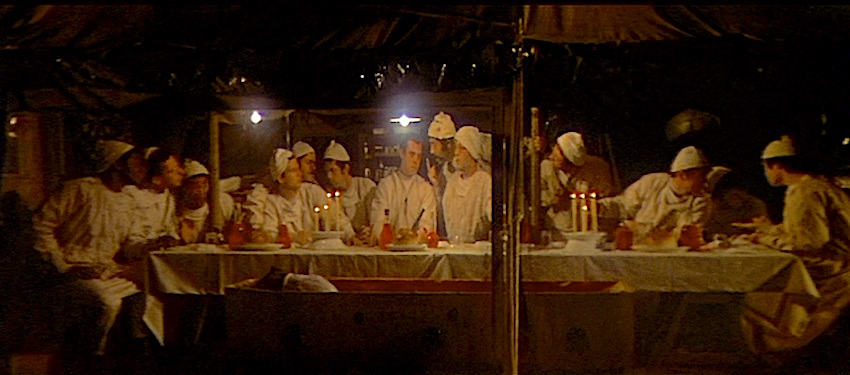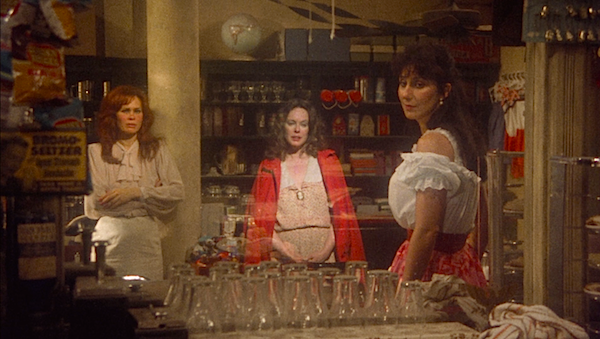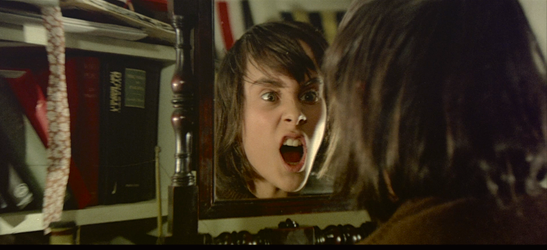“Jazz has endured because it doesn’t have a beginning or an ending. It’s a moment.” — Robert Altman, 2004
A quote that not only offers perspective on the art of jazz, but also provides a key to why so many of Robert Altman’s films carry such power. When attempting to provide an over-all descriptor of this Cinematic Master’s work the word “satire” is the most often used. Other great words would be “psychology” and “humanity,” because I find it difficult to limit the scope of Altman’s filmography to the satirical. Even when he pulls us into soft satire there are equal measures of psychology and human nature that make a film like The Player resonate. I remember being surprised at how much I enjoyed The Player. A meta-film filled with late 1980’s Hollywood insider jokes and pokes that I had already decided that I would not get most of what Altman’s film pursued. I was wrong.
At the time I didn’t fully appreciate many of the jokes/pokes, but Altman managed to pull me into his protagonist’s shoes. Tim Robbins’ Griffin is not an easy character to like. He is most certainly not the sort of character that you expect to root for, but I did. When this iconic movie is over the viewer is fully satisfied, but this was a movie that did not actually end. As I left the cinema that evening my mind drifted back to Griffin‘s situation. Just how far would he go in the next movie deal? The Player never really stops playing.
This sort of “ending” is the type Altman most often relied upon. In this case that ending was open-ended and threatened a whole new twist to a complex situation. Other times Altman simply cut the movie off or have his story forever floating off the screen as the credits began to roll. This often resulted in a sort of gut-punch or lingering melancholy. His first major critical and box office hit, MASH, was satirical as much as was potently human. By the time we come to that moment when the silly antics, raunchy pranks and comedy will conclude — it suddenly occurs to the audience that all of it has been a ruse. These characters have yucked it up not because it sums up who each of them are, but because they are all trying to delude themselves away from the realities of war. It is both innovative and startling to realize that Radar’s voice which has been booming out announcement over the military encampment is actually reading off the movie’s cast credits. Altman’s way of ending MASH is cleaver and hints that we are leaving the movie while the tragedies continue.
Robert Altman had been working in the film industry for over sixteen years when he was finally able to make his narrative fiction feature film. He was 43 years old when he arrived in Canada to shoot That Cold Day in the Park. He was no neophyte. A viewer need not know that fact because this seemingly forgotten cinematic gem is handled with a confident elegance. Having managed to secure Academy Award winning actress, Sandy Dennis, to star was a crucial part of his plan. In any other filmmaker’s hands this profoundly odd character study would have been turned into a morbid horror film. Nothing about the way Altman handles Cold Day indicates the creepy place the film is headed.
Sandy Dennis plays her character like only Sandy Dennis can. She is a wealthy but lonely young woman. She lives a mundane, lonely life surrounded by wealthy extravagances limited by a social life structured around older people. It almost feels as if she has being forced into the role of an aging spinster when in reality she is far too young. It is never clearly articulated, but thanks both to Altman and Dennis’ performance we receive several clues that something is very wrong with “Miss. Frances Austen.” When she breaks convention and offers help to a homeless mute “boy” who is actually closer to her own age than others we meet in her life. We hope this is a sign of healthy rebellion and quest for human connection.
But how often does human motivation follow our better hopes?

“I have to tell you something.”
Sandy Dennis
That Cold Day in the Park
Robert Altman, 1969
Cinematography | Laszlo Kovacs
With Laszlo Kovacs’ brilliant cinematography bringing additional emotional levels, one could call this movie a psycho-sexual thriller. The challenge in limiting this surprisingly effective film to that genre is non-sensical. The film is far more concerned with human psychology to allow itself to fall into line with a cinematic trope. That Cold Day is far more focused on human loneliness, lack of connection and the tyranny of societally imposed isolation and alienation. The film is all of these things but Altman’s main pursuit is to slip into a woman’s damaged psyche.
The film is short and fast-paced. Filled with uncomfortable and realistic scenes between Miss. Frances Austen and The Boy, we see the woman open-up to the mute boy who she manages to keep mostly nude most of the time. Altman’s protagonist is dealing with a whole lot more than sexual repression and alienation. The movie’s “twist” arrives shortly after the one we expect. It is the way in which Altman brings about That Cold Day‘s non-ending that sparks this low-budget magic. The deliverance of the story’s true twist shifts the audience chuckle into an unexpected disturbance. What seems comical gradually takes on the perspectives of the sinister and disturbing. This little movie will never leave your mind. Film critics at the time failed to grasp the power and audiences failed to see it. Robert Altman’s true cinematic debut continues to be studied and re-evaluated.
Another forgotten Robert Altman gem arrived to cinemas in 1978. A Wedding is structured and filmed in typical 1970’s casual Altman style. It is satire that manages to be both sharp and silly. A Wedding is also surprisingly sad. Filled with rambling sub-plots as two families come together for a lavish post-wedding reception, it is intentionally rambling but stumbles into deep-cutting cultural commentary. A Wedding is concerned with societal ideas around marriage, family, class and loneliness. A Wedding would later inspire a modern opera.
As the wealthy and the middle class mingle and attempt to form a vague idea of familial bonds we see almost every sort of tragedy and mishap imaginable. Altman seems to constantly being throwing the audience off-guard. He seems determined to refuse any specific genre. Intellectual, slapstick, raunchy and introspective, A Wedding stretches use of familial dysfunction to its limits. The end credits arrive with an unforgettable mixture of crudeness and solemn regret. It is a very strange and often dark “comedy” of epic proportion. It failed to connect with mainstream audiences despite an amazing cast list. Part of the reason remains active today. A Wedding is framed and seems to have been set-up as a forgotten chapter of American Cultural Satire documented so brilliantly with Altman’s 1975 cinematic masterpiece, Nashville. A Wedding was never intended as such. It stands alone and has a very different sort of aim.

“You know weddings are the happiest events I could possibly dream of and yet some how when they’re over it’s always so sad.”
A Wedding
Robert Altman, 1978
The ill-fated ad campaign for A Wedding boasted that the movie contained a great many secrets, but there were no secrets about his earlier movie. Altman took a head-first plunge into the murky waters of dream logic with 1977’s 3 Women. Altman was specifically clear that this entire film was born of a personal nightmare. He was also very gracious in sharing a good deal of the credit with one of the film’s primary stars. 3 Woman is an incredible examination of identity and surrealism was largely formed by the participation of all three actors in the title roles. This is most particularly true of Shelley Duvall.

” I had the most wonderful dream…”
Sissy Spacek / Shelley Duvall
3 Women
Robert Altman, 1977
Cinematography | Charles Rosher Jr.
This wildly experimental dark comedy morphs into one of the more disturbing films you are likely to see. It is full of female energy, but it never feels as if it is trying to make a statement about anything other than these three very specific female characters. Shelley Duvall’s Millie gleefully informs Sissy Spacek’s Pinky, “This is my parking space. It’s the best one!” Later Millie explains, “That’s Dirty Girtie! Pull her bow and she’ll say hello!” Her delivery of those improvised lines creates an odd and varied response for viewers. Some giggle, some laugh, and many are not sure how to react. There is one reaction that is usually shared: Millie and this dream-inspired film is uncomfortable and induces squirms.
When 3 Women debuted nearly all major critics swooned. In what has inspired a number of debates, Pauline Kael truly disliked the movie. Her negative viewpoint of this film is of particular interest because up until this movie, Kael had been a consistently staunch Altman ally. Her odd dismissal of 3 Women seemed to curse this extraordinary surrealistic movie. When 20th Century Fox released it into cinemas, audiences were either entranced, confused or indifferent. The film flopped and was pulled out of cinemas just a couple of days beyond a week. Over the following two decades 3 Women has not only become a “Cult Classic” — it is now considered one of the most important American films of the 1970’s. Robert Altman’s surreal study of female identity, isolation, loneliness and sexuality is a cinematic masterpiece.
As The United States headed into its Bicentennial and a game-changing election year, Robert Altman’s Nashville provided a satirical assault. This movie is quite often called the quintessential Robert Altman film. I agree with this viewpoint. Everything we know to anticipate from the great filmmaker is present. Overlapping dialogue, lots of characters, rambling plot points, improvisational in feel but clearly mapped-out toward one clear moving image of mid-1970’s US. Country music was shifting into a more mainstream accessed pop sensibility. Dolly Parton and Linda Ronstadt were both about to take a place on the pop charts. Country Music stardom was no longer limited to The Grand Ole Opry. And as the country headed into a cultural values torn battle — celebrity and celebrities were as important as anything else. Music Row was selling out. Altman and his screenwriter, Joan Tewkesbury, focused on Nashville as the stage to provide a scathing satire of American culture.

Perhaps the most lost is the most knowledgeable.
Lily Tomlin
NASHVILLE
Robert Altman, 1975
Cinematography | Paul Lohmann
So much has been written about this exceptional film it seems silly to attempt to add anything worthy of it, but this epic film remains as powerful as it must have been in 1975. It is satire, but it is also realistically grounded within the limitations of its very human characters. It has continued to cause incorrect criticism for depicting the horrors of celebrity stalking. This film is not an inducement, it is a mirror reflection. Looking carefully in the mirror is never easy. An epic film.
In 1971 Altman set out to explore the concept of The American Western. Many have referred to McCabe & Mrs. Miller as a satire of The American Western. I do not agree with that assessment. This artfully shot and realistically acted film feels like it is attempting to more accurately be an American Western. It succeeds.

“…Oh I hope you run into them, you who’ve been travelling so long.
Yes you who must leave everything that you cannot control…”
McCabe & Mrs. Miller
Robert Altman, 1971
The timing of the story is a key element for McCabe & Mrs. Miller. The film takes place just as the 19th Century is about to progress into the 20th Century. The setting of the film is that place we know as The Old West. Filmed utilizing natural light as if he were painting on a canvas, Vilmos Zsigmond’s work is breath-stealing. I would doubt that Altman had ever worked so closely with his cinematographer to capture the exacting viewpoints so precisely with the film’s. It also had to be a major coup to manage to cast both Warren Beatty and Julie Christie (infamous lovers at that time) on one screen. He makes the most of both movie stars.
Warren Beatty’s sly ‘aw, chucks attitude is transformed into the one of the movie’s two main characters. McCabe may be tough and ambitious, but he is not very smart. I think it is safe to describe Beatty’s McCabe as a seemingly lucky idiot. Julie Christie’s luminously erotic beauty and intelligence bring Mrs. Miller to life. There is a surprisingly realistic love story here: A stunningly beautiful and intelligent woman begins to fall in love with the handsome man who appears to have all the power. The film’s straining question is how far can love grow when two people are so very different. McCabe‘s brainpower and opinions are so dull that it seems to degree a sad fate.

“…When you’re not feeling holy, your loneliness says that you’ve sinned…”
No. It’s not Jesus.
Warren Beatty
McCabe & Mrs. Miller
Robert Altman, 1971
Cinematography | Vilmos Zsigmond
McCabe & Mrs. Miller is a beautiful looking and sounding film. Leonard Cohen’s songs fill in as much of the movie’s soundtrack. This actually lends a very late 20th Century take on the film’s story. Cohen’s music also adds to the melancholy that pours out from Zsigmond’s photography. This masterful film is not satire. It is reality. Understated and even quiet, this film is truly brilliant. At long last the film has been newly restored and will be issued to DVD/Blu-Ray thanks to the folks at The Criterion Collection.
Going against the beginning of my post, McCabe & Mrs. Miller does offer a true end to the story. And this is a story that continues to speak in a meaningful way.
“Happy endings are absolutely ludicrous, they’re not true at all. We see the guy carry the girl across the threshold and everybody lives happily ever after — that’s bullshit. Three weeks later he’s beating her up and she’s suing for divorce and he’s got cancer.” — Robert Altman




























































